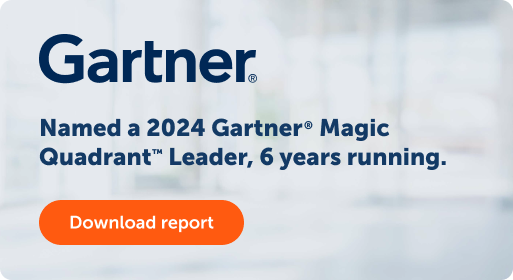- Products
Automate any process, anywhere Streamline complex, mission-critical workflows with the Agentic Process Automation System. Explore the Platform Explore the Platform
- AI System
- Build AI Agents
Automate advanced tasks with AI Agent Studio.
- Streamline workflows
Rapidly design and deploy with Automator AI.
- Process complex documents
Extract and organize data with Document Automation.
- Discover opportunities
Identify inefficiencies with Process Discovery.
- Orchestrate automations
Centralize initiatives with Automation Workspace.
- Build AI Agents
- Automation System
- Govern programs
Establish frameworks and oversight with CoE Manager.
- Automate from any app
Get AI-powered assistance with Automation Co-Pilot.
- Speed workflows with cloud
Power instant data exchange with serverless Automation Anywhere Cloud Service
- Unify systems
Connect applications and workflows with seamless integrations.
- Govern programs
- View all Products
-
- Solutions
Featured Solutions
 Google Cloud Google Cloud and Automation Anywhere empower enterprises to fast-track their AI + Automation journey. Google Cloud
Google Cloud Google Cloud and Automation Anywhere empower enterprises to fast-track their AI + Automation journey. Google Cloud Amazon Web Services Streamline workflows, reduce costs, and make automating even easier when you combine the Agentic Process Automation System with AWS Amazon Web Services
Amazon Web Services Streamline workflows, reduce costs, and make automating even easier when you combine the Agentic Process Automation System with AWS Amazon Web Services- By Industry
- By Function
- By Technology
- View all AI Solutions
-
- Resources
Get Community Edition: Start automating instantly with FREE access to full-featured automation with Cloud Community Edition.
Featured
 Named a 2024 Gartner® Magic Quadrant™ Leader for Automation. Celebrating Six Years of Recognition as a Leader. Download report Download report
Named a 2024 Gartner® Magic Quadrant™ Leader for Automation. Celebrating Six Years of Recognition as a Leader. Download report Download report - Customers
New & improved certifications
 Give yourself a competitive advantage with Automation Anywhere's industry-recognized certifications.Explore Certifications Explore Certifications
Give yourself a competitive advantage with Automation Anywhere's industry-recognized certifications.Explore Certifications Explore Certifications - Company
Get in touch with us Get help, know more, learn, ask questions, or just say Hi! Contact Us Contact Us
- Get To Know Us
- Announcements
- Society
-

In part 1 of our RPA Primer blog series, we explained what Robotic Process Automation (RPA) is and how it can help your organization. Part 2 covered the basic components of RPA and how easy it is to build a bot. In this installment, we’ll discuss advanced features, including workload management, virtual desktop infrastructure, and attended bots.
Workload management
The Automation Anywhere Enterprise Control Room feature is excellent at managing bots. But, you can go a step further to ensure you meet service-level agreements (SLAs) by using workload management (WLM) to automate how bots are prioritized.
Available with Automation Anywhere Enterprise 11.x, WLM is much more than a queue management system. It has a built-in SLA calculator and an RPA as a Service capability through integration with the Bot Store, a bots-on-demand platform to help you meet increased demands when needed.
WLM manages workloads by dividing the work into logical segments and processing them simultaneously — and securely — on different devices to ensure optimal resource usage while meeting SLAs.

To establish time-based processing for work items, the Control Room uses work queues to gather the type and time frame for the data elements. A mortgage company, for example, would create a work queue to establish the elements to be used in a process: loan amount, FICO score, and other items necessary to determine the viability of an applicant for a mortgage loan.
Note that queues can be scheduled to run at certain times, such as during off-peak hours, in order to optimize workload processing. And, work queues can be prioritized to meet SLAs. The SLA calculator lets you determine how many devices should be assigned to a device pool to meet a particular SLA.
As shown below, the user enters the work items to be processed and the calculation type by either stating the number of devices or the processing time to ascertain how many devices are required to meet that time target.

Virtual desktop infrastructure (VDI)
VDI has many applications and advantages over locally stored applications. For example, it’s widely used in the healthcare industry, and for good reason. Because patient data is never written to a local drive on a company device, no patient data is exposed in the event of a company laptop loss or theft. Other advantages include cost containment, compliance, and IT management.
In order to perform automation functions on a VDI system, the RPA system must be able to find the data. In a non-VDI environment, locating information in an Excel spreadsheet, for example, is effortless, as data can be found in nice neat columns and rows, which are easily tracked by the RPA system.
However, when VDI projects a desktop image, the RPA system isn’t given data references by the application and, therefore, can’t find where the data resides. RPA systems need to use other references, such as screen position, in conjunction with image and optical character recognition (OCR) to get to the necessary data.
If the screen resolution changes or the fields aren’t in the same place, RPA over VDI might not be able to locate the needed data. There are two solutions to this challenge: taking data off the desktop image via an OCR type of process, or going directly to the data source — i.e., back to the server.
For the OCR type of process, Automation Anywhere Enterprise — particularly the AISense feature — offers a realistic solution. The AISense for Citrix algorithm automatically switches between OCR- and image-based automation, depending on what it needs to make bots more accurate. As it learns what that is, the tool becomes more accurate, too.
Powered by artificial intelligence (AI), machine learning, natural language processing, and computer vision, AISense creates all UI objects and the dynamic links between them, independent of changes in relative position, resolution, color, scale, or zoom level. You get to pick the UI element you want, further boosting accuracy.
The second process for locating data is called independent computing architecture, or ICA, and was designed by Citrix. It works by passing data between the client and server — thus, better enabling the automation function.
Citrix ICA separates the user interface from the application while keeping 100% of the logic on the server. That means only screen updates, mouse clicks, and keystrokes travel the network.
Recognizing the incredible value of ICA-based VDI automation, Automation Anywhere has created Remote Agent to enable automation with ICA. Remote Agent works as an app in the Citrix StoreFront, where it’s tightly integrated with the Automation Anywhere Enterprise application using the ICA protocol.
Attended automation
Although automation can significantly improve a company’s processes, it can’t do everything. There are times when bots need human help to make decisions. For example, when a chatbot detects an unhappy customer or in a borderline mortgage application case, human intervention is warranted, and attended bots can do this.
One of the simplest forms of attended automation is exception handling. When a bot encounters an unavailable or inaccessible resource, it can trigger immediate user notification and a prompt for an alternate execution path — such as the need for additional information or document approval.
The diagram below outlines how the exception process works, as invoked by an insurance processing agent.

Conclusion
Automation consists of more than just bots. It also involves bot management, which includes creating and prioritizing work queues to meet SLAs. Automating virtual desktops is a huge win for heavily regulated industries, such as healthcare and financial services, ensuring data not only stays safe, but that it’s also efficiently processed.
And, while unattended bots work quietly in the background, attended bots interact with knowledge workers to assist them in instances where human decisions are required, such as in a mortgage application or insurance claim that needs just a bit more information.
You can sign up for RPA courses at Automation Anywhere University to learn more.
Try RPA for free.
About Shobhana Viswanathan
Director of Business Development Shobhana Viswanathan capitalizes on her strong blend of technical, business development, and marketing skills — particularly in cloud computing, artificial intelligence, and RPA — to understand and match technology to business and market needs.
Subscribe via Email View All Posts LinkedInGet to know the Agentic Process Automation System.

For Students & Developers
Start automating instantly with FREE access to full-featured automation with Cloud Community Edition.



